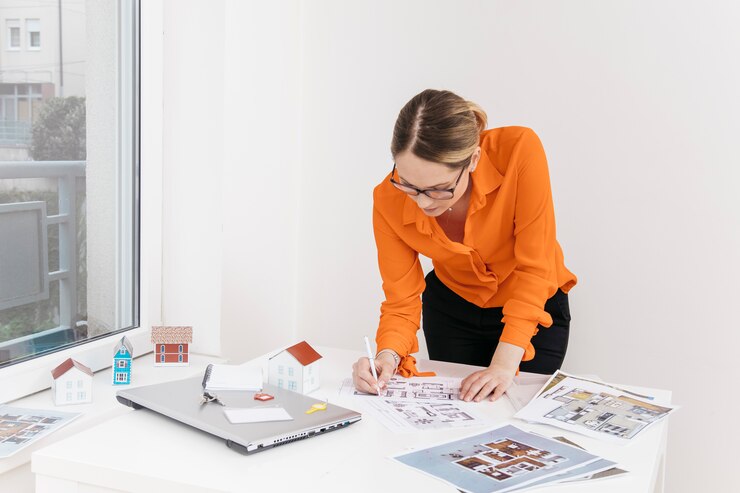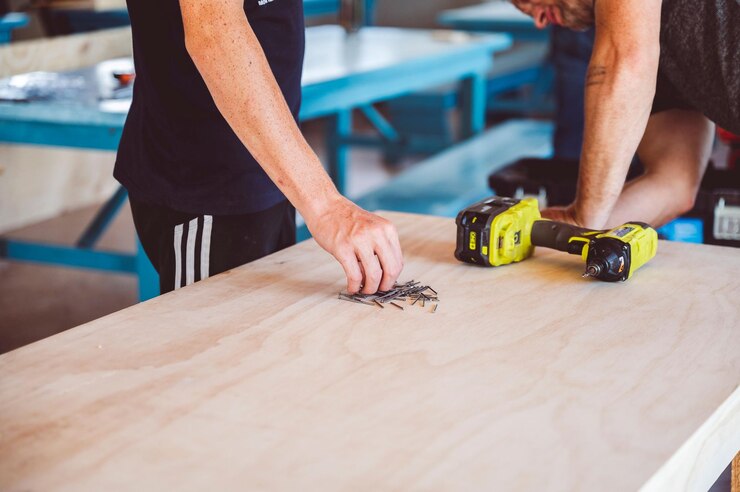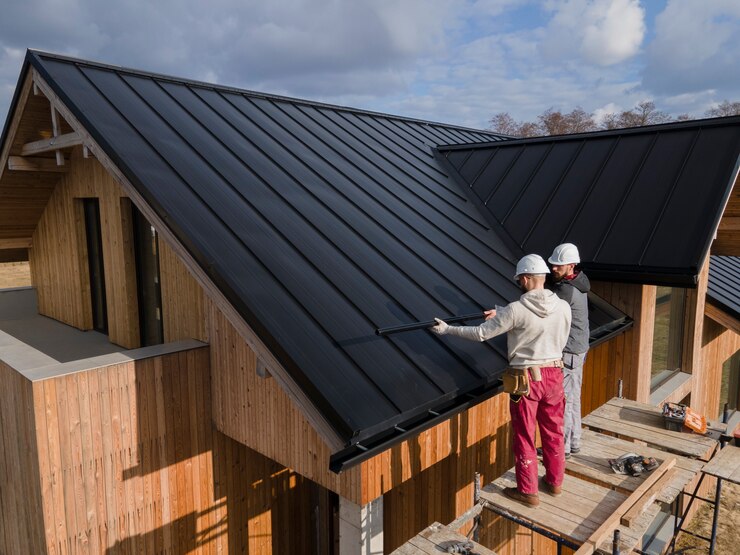How Much Do Interior Designers Make?
The profession of interior design combines creativity, technical skills, and business acumen. Interior designers shape the spaces where we live, work, and play, aiming to enhance function, safety, and aesthetics. Compensation for this creative role can vary widely based on a variety of factors, including geographical location, experience, education, and specialization within the field.
With an ever-evolving marketplace, interior designers must stay abreast of the latest trends and technologies to maintain a competitive edge. Economic and market factors also play a significant role in determining the financial success of an interior designer. Additionally, the move towards freelancing and self-employment has opened new avenues for income but comes with its own set of uncertainties and challenges. As interior designers navigate these nuances, industry reports and job postings offer insight into the potential earnings one can expect in this dynamic career.
Key Takeaways
- Interior designers’ salaries are influenced by location, experience, and educational background.
- Economic trends and market demand can impact earning potential within the interior design field.
- Career progression and specialization can lead to increased earning opportunities for interior designers.
Interiors Designer Earnings Overview
Interior designers’ salaries vary based on numerous factors, including specialization and geographical location. Accurate knowledge of these variables is crucial for understanding the spectrum of an interior designer’s earning potential.
What Factors Influence an Interior Designer’s Income?
Specialization and Sector: Designers in the commercial sector have different earnings compared to those focusing on residential projects. For example, according to data from Houzz Pro, in 2022, the average yearly income for commercial interior designers was around $60,054, while residential designers averaged at about $55,861.
Geographical Location: The location of a designer’s practice significantly influences earnings. Data from Indeed indicates that the average interior designer salary in the United States is approximately $69,541 annually. However, this figure can fluctuate depending on the cost of living and demand for design services in different regions.
Experience and Reputation: As with many professions, an interior designer’s experience and standing within the industry can lead to higher wages. The earning potential typically increases with the designer’s level of expertise and portfolio quality.
Total Compensation: In addition to the base salary, total compensation for interior designers can include bonuses, profit sharing, commissions, or other types of financial benefits. Glassdoor estimates that the total compensation for an interior designer in the United States can reach up to $98,062 per year, factoring in the additional pay beyond the base salary.
Role of Geographic Location
The salaries of interior designers can vary significantly based on their geographic location which can be influenced by factors such as state-specific demand and the cost of living in that area.
How Does State-Specific Salary Data Influence Earnings?
Interior designers’ salaries in the United States fluctuate by state due to regional differences in market demand, employment opportunities, and economic conditions. For example:
- New York: Designers often have higher earnings, with salaries ranging between $39,000 to $54,000 annually.
- Florida: Here the average salary is around ~$44,000 per year.
- California: In cities like Los Angeles, interior designers can make an average of $69,112 per year.
Whereas, states like South Dakota and West Virginia may offer lower average salaries because of the smaller market sizes and reduced demand. Conversely, regions with flourishing real estate markets such as Colorado and Massachusetts may present more lucrative opportunities for interior designers.
How Does the Cost of Living Impact Interior Designer Salaries?
The cost of living in a particular area can greatly impact the take-home pay of interior designers. Higher costs of living, typically found in states like Hawaii, New York, and California, often necessitate higher salaries for interior designers to maintain a comparable standard of living. For instance, despite a decent average salary, the cost of living in San Diegorequires a substantial monthly income.
In contrast, states like Mississippi and Idaho feature a lower cost of living, which means that interior designers in these locations may earn lower salaries but still enjoy a similar or even better quality of life compared to their counterparts in more expensive areas. Thus, understanding and considering the cost of living is crucial when evaluating the actual earning potential for interior designers across various locations.
The Influence of Experience
Experience significantly shapes an interior designer’s earning potential. It proves a determinant factor in the financial trajectory of professionals in this field.
How Does Experience Impact Entry-Level vs. Experienced Designer Income?
An entry-level interior designer typically starts with a lower salary compared to their experienced counterparts. For example, data indicates that in the United States, interior designers in the initial phase of their careers can expect to make around $47,990 to $55,861 per year. As they gain experience, their skill set expands, leading to potential increases in earnings.
On the flip side, experienced designers have honed their abilities and have an established portfolio, usually leading to increased trust from clients and consequently, higher remuneration. Industry insights suggest that after gaining substantial experience, designers can see their salaries climb to $69,000 annually or higher, with luxury interior designers sometimes fetching salaries in the range of $61,058 on average.
What Role Does Experience Play in Career Progression and Salary Growth?
Designers often begin their careers assisting more experienced professionals and working on smaller projects. As their career progresses, they may take on larger, more complex projects or even specialize in high-demand niches like luxury or commercial design. This level of growth often translates into higher salaries and can be influenced by factors like industry specialization, market demands, and the economic conditions of the region they are operating in.
Salary growth is generally commensurate with a designer’s increasing experience level. With each year of experience, a designer can negotiate higher rates or salaries, with top industry positions reaching well into the six-figure range for highly specialized and experienced professionals.
Education and Certifications
The salaries of interior designers can be significantly influenced by their educational background and the certifications they hold. Gaining higher education and professional certifications can bolster an interior designer’s credentials and potentially lead to higher earnings.
Higher Education’s Impact on Earnings
Does obtaining a higher education affect an interior designer’s salary? A bachelor’s degree in interior design or a related field is often considered essential for entry-level positions in the industry. Interior designers with advanced degrees or specialized education, such as a master’s degree, may see increased earning potential. These degrees provide in-depth knowledge of design principles and practice, as well as foster critical thinking and creative skills.
Professional Certifications
What role do professional certifications play in an interior designer’s career? Certifications such as the National Council for Interior Design Qualification (NCIDQ) certification are highly regarded in the field. Interior designers who have obtained the NCIDQ certification may command higher salaries, as this certification demonstrates a standard of excellence and proficiency in the profession. Additionally, those with LEED certification can also see a rise in earnings, emphasizing their skills in sustainable design, which is increasingly valued among clients and employers alike.
Industry Niches and Specializations
Interior designers have the opportunity to focus on various niches and specializations within the design industry, which can significantly impact their earning potential and job prospects.
What Differentiates Residential vs. Commercial Design?
Residential interior designers prioritize the creation of living spaces that are both aesthetically pleasing and functional for homeowners. Their work often involves collaborating closely with clients to meet specific tastes and needs—ranging from modern apartment living to grand traditional homes. In contrast, commercial interior designers focus on business settings, crafting spaces that align with corporate branding and optimizing for employee productivity and client interaction. Such designers may work in office settings, healthcare facilities, or retail environments, where the demand for innovative and functional design continues to foster job growth in the sector.
How Do Specialized Design Fields Influence the Industry?
Designers may choose to specialize in particular fields that cater to specific markets or functional needs. One such area is healthcare design, which requires a sound understanding of regulations and the unique needs of medical facilities to create spaces that support patient recovery while also enhancing staff efficiency. These designers command a certain premium due to the specialized nature of their work. Within the commercial sector, knowledge of building codes, fire safety, and accessibility are crucial and can positively influence an interior designer’s salary trajectory. As interior design firms increasingly recognize the importance of niche expertise, specializations within the design industry like sustainable design or lighting design are seeing a rise in demand, offering a breadth of opportunities and potentially higher earning potential.
The Role of Skills and Creativity
In the interior design profession, the amalgamation of both technical prowess and creative flair is essential. Designers must possess practical skills that meet the functional needs of their clients, while also delivering aesthetically captivating spaces.
What Are the Essential Technical Skills?
Technical skills are a cornerstone for interior designers, enabling them to convert their creative vision into tangible outcomes. These skills encompass a range of abilities, including in-depth knowledge of building codes and sustainable design principles, which ensure that spaces are safe, accessible, and environmentally friendly. Interior designers must also be adept in visualization techniques, employing tools like computer-aided design (CAD) software to present their ideas effectively.
- Proficiency with CAD Programs: Essential for creating precise room layouts and furniture placement.
- Knowledge of Building Regulations: Crucial for constructing designs that comply with all safety and accessibility standards.
How Does Creative Expertise Shape a Designer’s Work?
Creative expertise allows interior designers to craft spaces that are not just functional but also emotionally resonant and aesthetically pleasing. It’s this creativity that defines their style and sets them apart from competitors. A strong portfolioshowcasing a designer’s capacity to blend color, texture, and materials is often indicative of their creative skills.
- Bold Aesthetic Decisions: Transforms functional spaces into artistic statements.
- Innovative Use of Materials: Demonstrates a designer’s commitment to sustainability and their ability to create visually stunning environments.
A robust blend of these skills enables interior designers to bring their unique visions to life, ensuring that each project not only meets the practical demands of the space but also enriches it with creative and sustainable beauty.
Economic and Market Factors
Economic and market factors significantly influence the interior design industry by affecting job availability and salary ranges for professionals. These factors include the impact of industry demand, economic cycles, and trends such as urbanization, online marketplaces, and freelance opportunities.
How Does Industry Demand and Job Availability Affect Interior Designers?
Industry demand plays a crucial role in determining the number of job opportunities and growth potential for interior designers. As urbanization continues to increase, there is a heightened demand for interior designers to create functional and aesthetically pleasing spaces in urban settings. The move towards online services has also expanded the market, enabling designers to offer their expertise through freelancing platforms, which has increased the accessibility of interior design services to a broader clientele.
- Job Growth: The design industry is witnessing job growth, partly due to these urbanization trends.
- Freelance Opportunities: Freelancers in the interior design industry are taking advantage of online platforms to increase their sales and reach. This trend is contributing positively to job demand and availability.
What Is the Impact of Economic Cycles on the Interior Design Profession?
Interior designers’ financial prospects are closely tied to economic cycles. During a strong economy, there tends to be an influx of capital into the housing and commercial sectors, leading to an increased demand for interior design services. Conversely, in a downturn, the demand for such discretionary services may dwindle, and interior designers might see a contraction in the job market.
- Sales and Financial Health: Sales in the design industry are sensitive to these cycles. A robust economy typically translates into healthier financial performance for interior design services.
- Long-term Projections: While short-term economic fluctuations can impact demand, long-term projections remain favorable for the industry as a whole, provided designers adapt to changing market conditions and consumer preferences.
Freelancing and Self-Employment
Entering the realm of freelancing or self-employment in the interior design industry often means embracing the dual roles of designer and entrepreneur. This combination can offer increased earnings potential and greater personal fulfillment for those ready to take on the challenge.
What Is the Potential Revenue for a Freelance Designer?
Freelance interior designers’ income can vary widely, dependent on factors such as their market positioning, skills, experience, and the types of clients they attract. Typically, these designers have the freedom to set their own rates. According to Houzz, interior designers have seen a variety of earnings, with salary figures ranging based on their business structure and client base. Moreover, platforms like Houzz provide a marketplace for freelance designers to showcase their portfolios, connect with clients, and grow their business.
How Do Business Acumen and Clientele Influence Success?
The success of self-employed interior designers relies heavily on their sales strategies and their ability to cultivate and retain a robust clientele. Designers must not only excel in their creative services but also demonstrate strong business acumen to manage finances, market their services, and create a sustainable business model. Effective client communication and customer service are crucial for client retention and growth. Self-employed designers need a well-designed portfolio, potentially listed on platforms like Houzz, to attract and build trust with potential clients.
Comparing Salaries Across Different Sectors
When evaluating the earnings of interior designers, it’s clear that the sector in which they operate plays a significant role. Salaries can vary due to the different demands, client types, and project scales within corporate and healthcare environments, as well as hospitality and high-end residential spaces.
How Do Corporate and Healthcare Design Salaries Differ?
Corporate interior designers generally cater to business clients, focusing on workspaces that optimize efficiency and promote a company’s culture. They may be involved in choosing furniture, specifying materials, and understanding branding requirements for a variety of business settings. Typically, the average salary range for corporate sector interior designers is between $53,500 to $70,000 annually.
On the other hand, healthcare interior designers specialize in environments like hospitals and clinics, where function and strict health code adherence are critical. Their role often requires knowledge of materials that resist bacterial growth and layouts that maximize patient privacy and staff efficiency. Salaries for interior designers in the healthcare realm can reflect the specialized nature of this field, although specific figures are not provided in the search results.
What is the Earnings Potential in Hospitality and High-End Residential Design?
Hospitality interior designers are instrumental in creating inviting spaces for hotels, resorts, and other guest accommodations. They must balance aesthetic appeal with practicality to enhance the guest experience. The income in this subsector can vary widely based on location and the prestige of the properties one works with.
In the high-end residential market, designers work with wealthy clients to renovate and decorate private residences. Projects can be extensive and require a keen eye for luxury and exclusivity. According to an analysis by ZipRecruiter, a luxury interior designer’s average salary is about $61,058 per year in the United States. Nevertheless, for truly bespoke and upscale projects, this figure can soar much higher, sometimes ranging from $23,000 to $122,000 per year.
Impact of Living and Working Standards
Interior designers’ salaries are often reflective of the living and working standards of the regions in which they operate. These standards can influence both the demand for design services and the nature of the projects undertaken. Two critical facets of this are the emphasis on safe and functional design as well as the incorporation of environmental considerations.
Why is Safe and Functional Design Emphasis Important?
Safe and functional design goes beyond aesthetics to ensure spaces are practical and risk-free. Interior designers are responsible for creating environments that not only look pleasing but also adhere to safety regulations and codes. For instance, a designer must consider factors such as:
- Emergency Exits: Easily accessible in case of a crisis.
- Materials: Non-toxic and flame-retardant materials that promote occupants’ wellbeing.
- Lighting schemes must account for both functionality and energy efficiency, enhancing visibility while minimizing hazards.
This demanding expertise often justifies higher compensation for designers who specialize in such vital aspects of interior design.
How do Environmental Considerations in Design Affect Salaries?
Sustainable design focuses on minimizing environmental impact by incorporating eco-friendly practices and materials. Clients are increasingly drawn to sustainable and green design due to a rising awareness of environmental issues. Interior designers with expertise in this area might integrate elements like:
- Energy-efficient lighting: LED fixtures or automated systems to reduce energy consumption.
- Sustainable Materials: Bamboo flooring or recycled glass countertops for reduced environmental footprint.
Designers proficient in sustainable practices can attract a premium for their services, reflecting the specialized knowledge and sourcing required to implement such design choices successfully. Higher compensation is often found in locales where clients prioritize and are willing to invest in sustainable and environmentally sound interiors.
Long-Term Career Outlook
Evaluating the long-term career outlook for interior designers involves understanding industry growth projections and how professionals can prepare for future trends. Data points such as the anticipated growth rate, the shifting demand in design services, and changes in national average salaries play pivotal roles in shaping the future of this career path.
What is the Projection of Interior Design Industry Growth?
The Bureau of Labor Statistics indicates that employment for interior designers is expected to expand by approximately 4% from 2022 to 2032. This growth rate aligns with the average for all occupations. Each year, an average of 9,000 job openings are projected, many due to the need for replacements of workers transitioning to different careers or retiring. Factors such as increasing demand for sustainable design and an aging population requiring accessible living spaces are anticipated to contribute to the steady growth in the design industry.
How Can Interior Designers Prepare for Future Trends?
Interior designers should be mindful of advancements in technology and evolving consumer preferences that could impact sales and services within the industry. Staying informed about materials, technologies, and design methodologies will be integral to success. Alongside technical skills, designers can benefit from developing a deep understanding of building codes and accessibility standards. Since salary can vary by specialization, designers may consider honing in on areas projected for higher demand, such as health care facility design, which can command higher compensation rates. As the industry evolves, the Bureau of Labor Statistics suggests that interior designers who adapt to these trends and niche markets may see more favorable salary growth and employment stability.
Frequently Asked Questions
The earnings of interior designers fluctuate based on experience, location, and type of employment.
What is the annual salary range for interior designers?
Interior designers in the United States have a salary range that typically falls between $47,990 and $69,000 annually, with several factors impacting the specific earnings within this range.
How do earnings for interior designers differ across major U.S. cities?
Major U.S. cities show significant variation in the earnings of interior designers, with the average annual salary being influenced by the cost of living and demand for design services in each metropolitan area.
What are the hourly rates for interior designers by state?
The hourly rates for interior designers can vary by state, often reflecting regional economic conditions and local market demands for interior design expertise.
Can interior designers expect to earn more with experience?
With increased experience, interior designers can expect to see higher earnings, as those with several years in the industry typically command larger salaries than entry-level designers.
What is the income potential for interior designers on a per-project basis?
On a per-project basis, interior designers’ income potential can be considerably high, especially for those with strong portfolios who take on larger, high-budget projects.
What factors influence the profitability of an interior design career?
Several factors, including specialization, clientele, reputation, and geographic location, play a key role in the profitability of an interior design career.






